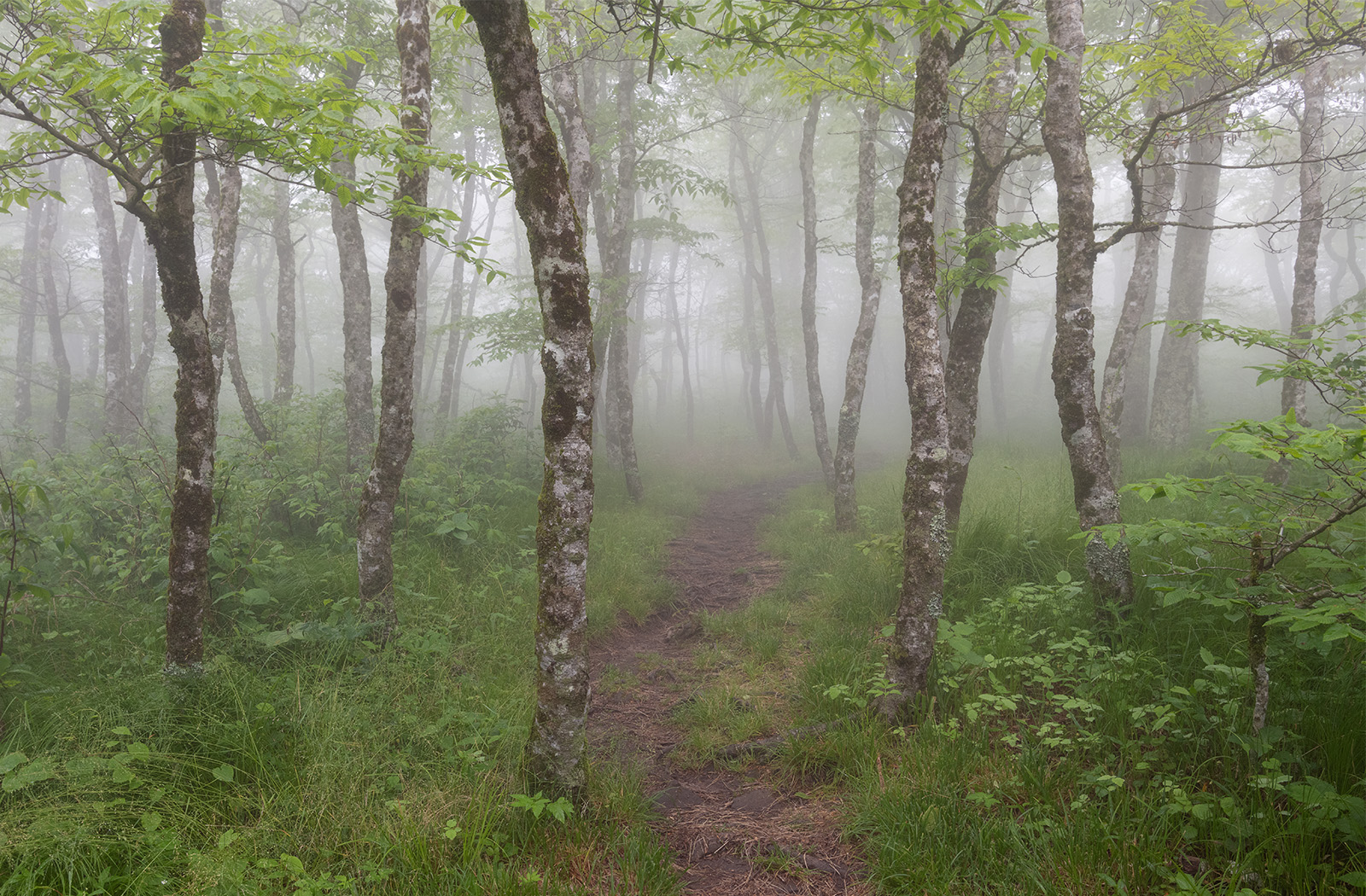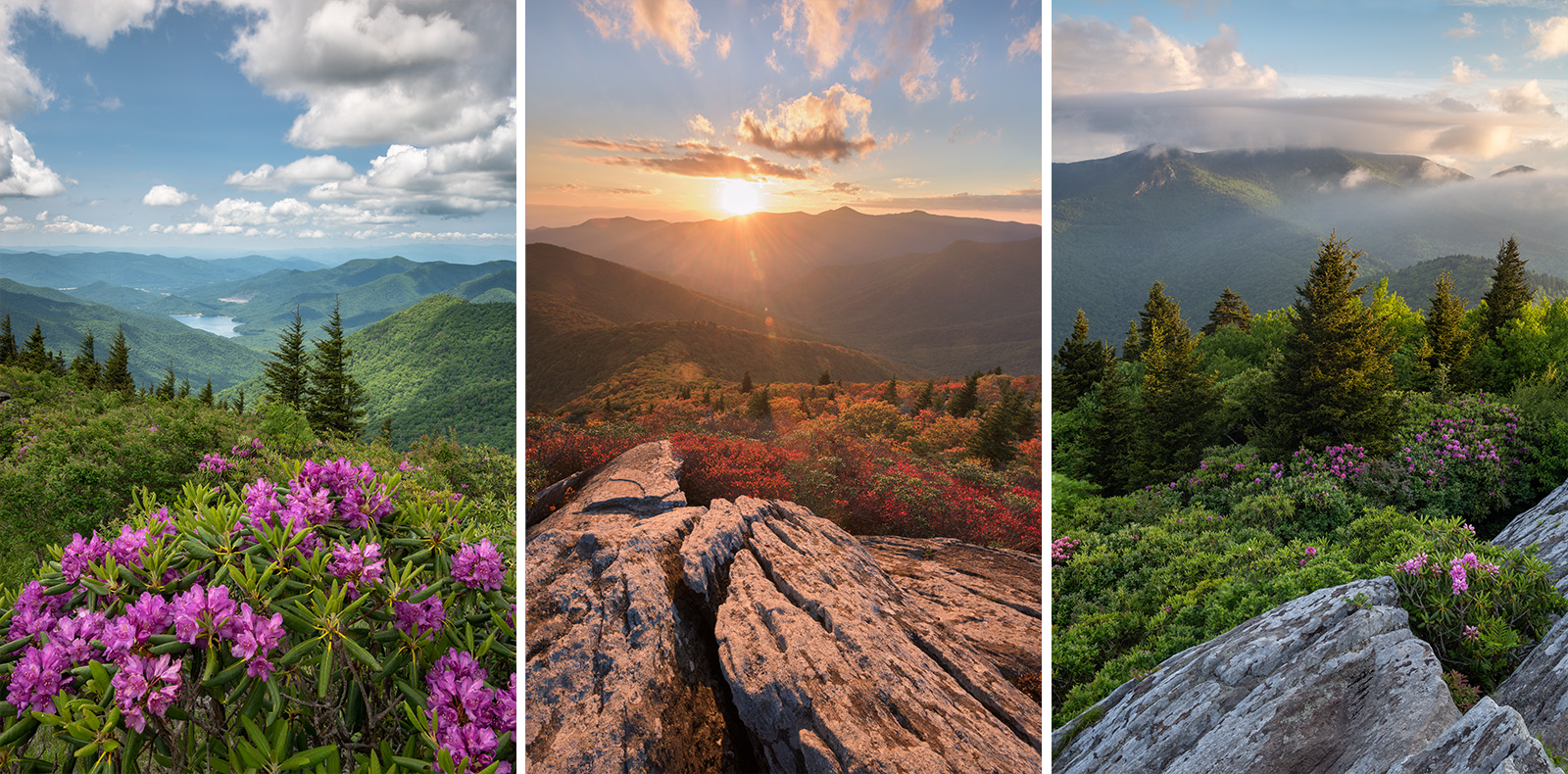
The Blue Ridge Parkway (BRP)
The Blue Ridge Parkway is a linear park, the longest in the United States at 469 miles. It serves to connect Shenandoah National Park in Virginia to Great Smoky Mountains National Park in North Carolina. More than just a scenic roadway, the Blue Ridge Parkway is unique for its exceptional display of biodiversity, especially towards the southern end. The Blue Ridge Parkway forms, for me, a largely unbroken green corridor from my home in Virginia right into the beautiful and mysterious heart of Southern Appalachia. I travel it’s borderless, gateless, gently sinuous length several times every year and always find the roadway to provide moments of magic and discovery.
What is there to see?
There are four regions/districts along the Blue Ridge Parkway. In Virginia, the Ridge and Plateau regions. In North Carolina, the Highlands and Pisgah regions. I operate primarily in the North Carolina Highlands and Pisgah regions.
The Blue Ridge Parkway in North Carolina is heavily forested. Expect a thick, lush, green tunnel of trees interrupted occasionally with scenic overlooks of deep valleys and mountain ridges.
Hiking trails and attractions are frequent along the roadway. Rocky pinnacles and scenic waterfalls are often the destinations.
Wildflowers are common alongside the roadway. Vegetation and species are a function of elevation and conditions. Expect to enter Southern Appalachian Spruce-Fir forest at several high elevation sections of the Blue Ridge Parkway.
A number of small lakes can be seen and accessed from the Blue Ridge Parkway, including Bass Lake and Price Lake.
When are good times to visit?
The Blue Ridge Parkway facilities officially opens in late May and close in late October. However, many sections of the roadway remain open to visitors year around.
Spring (May +June)
My personal favorite season to work the Blue Ridge Parkway is the spring. Because of elevation, early spring doesn’t arrive until early May. Spring ephemeral wildflowers carpet rich coves and hillsides with millions of tiny wildflowers. The colors of budding trees work slowly up the slopes from the valleys below. Late, in late spring, flowering bushes like Mountain Laurel and Rhododendron add splashes of vibrant color to the landscape. Flying insects are minimal during early spring and the temperatures generally begin very cool in the mornings and warm gently throughout the lengthening days.
Autumn (October)
Perhaps the busiest season along the Blue Ridge Parkway. Autumn is spectacular in the forests of Southern Appalachia. Considerable elevation change allows multiple opportunities to catch the color progression as it drops from the highest elevations down into the valleys. Weather is generally warm with consistently cooler nights and mornings. Fog and light rain intensify the colorful forests of the Southern Appalachian Mountains in autumn.
Summer (July)
The summer season is all about wildflowers along the Blue Ridge Parkway for me! Praire-like environments come alive with Blazing Star and milkweeds. The roadsides flash with orange Turks Cap Lilies and red Bee Balm. Rosebay Rhododendron line the streams and waterways with their pinkish/white blooms. The days are long and warm; expect gnats to be a nusiance during the summer months. Humidity can be high as well. The occasional summer thunderstorm can create dramatic skies over the many overlooks.
What type of camera gear is optimal for this place?
Variety of focal length lenses. The overlooks along the Blue Ridge Parkway will present many opportunities to use both a mid-range lens (like a 24-70mm), as well as long telephot lenses (200+mm). Waterfalls along the Blue Ridge Parkway are generally very approachable. They will beg a wide-angle lens (like a 14-24mm). Wildflowers will beg a macro lens or filter.
Tripod. Waterfalls and mountain streams will require a solid base for creative exposures. Early morning and late evening shooting along the Blue Ridge Parkway is best accomplished on a tripod for stability and longer exposures.
Circular polarizer filter. Waterfalls and streams in the forest do well with polarization to remove light glare on the rocks and waxy foliage.
How difficult is the terrain?
Overlooks along the roadway are easy.
Trails along the Blue Ridge Parkway can be moderate to difficult and vary in length. Many are relatively short (under two miles), but the Mountains to Sea Trail and other long distance trails do exist along the roadway.
The terrain is rocky and rooted. Elevation change can be abrupt and severe.
Choose your dates, join me in the field, and let’s use our cameras to explore and connect with the physical landscape.
Behind every digital photograph is a real experience.
Let’s have some of those!















Ready to join me on the Blue Ridge Parkway?
Photo adventures give me the freedom to live my dream. If I can show you a new landscape or add depth to a landscape you already know, drop me a line. Let’s get together!
